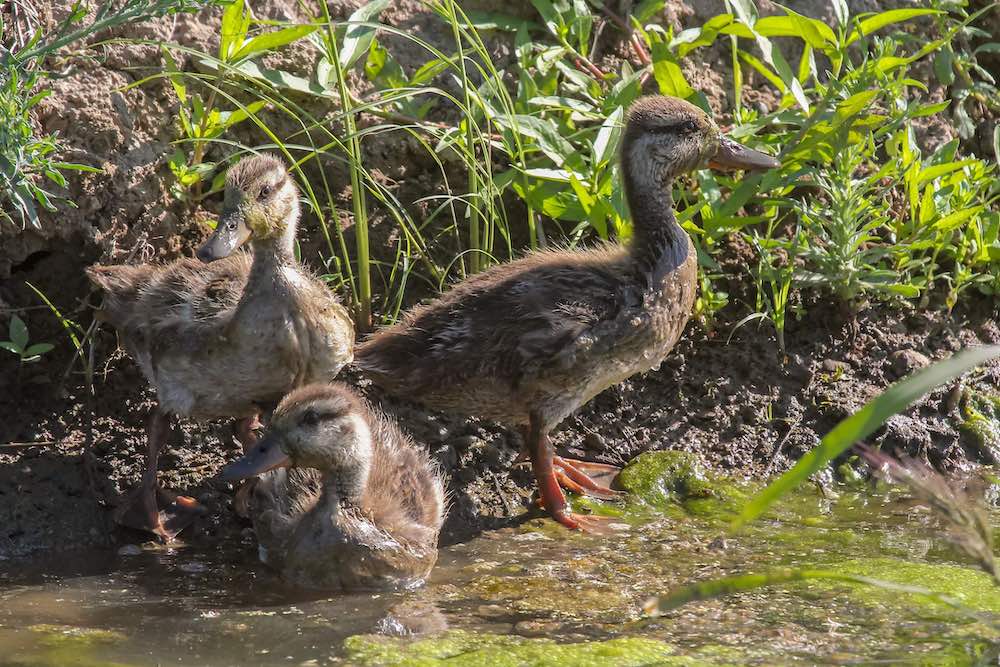Waterfowl Nesting
By Luke Matthews
During winter, the Sacramento Valley holds the highest density of waterfowl in North America. The majority of these birds are migratory and, once the millions of ducks and geese head back up north to breed, it is easy to forget that there are a number of local breeding duck species that never left. Dabbling duck species that breed in the Sacramento Valley are primarily Mallard, Gadwall, and Cinnamon Teal. Statewide surveys in 2018 estimated the Mallard population at 273,000 ducks, followed by Gadwall at 103,000 and, finally, Cinnamon Teal at 78,000.
Breeding is similar across all three of these species, with pairs forming in late winter and nesting in the spring. Nests are typically a bowl, built out of vegetation, directly on the ground. As females begins to incubate their eggs, they pull out down feathers and use them to line the nest for insulation. Mallards are the first to start nesting and typically lay smaller clutches ranging from 7-10. Gadwall tend to have slightly larger clutches at 8-11 eggs, and Cinnamon Teal still larger with 9-12 eggs. Mallard eggs tend to be larger and incubation can take up to 30 days; whereas Gadwall and Cinnamon Teal incubation periods are shorter at up to 27 and 25 days respectively.

Nesting historically occurred in the extensive marshes, which made up the Sacramento Valley. While these birds still nest in the various private and publicly owned wetlands throughout the Valley they also nest extensively in ricelands, cover crops, and wheat fields. In fact, an actively growing rice crop can be perfect habitat for young ducklings by providing them with much needed water, protection, and food. Since nesting occurs in agricultural fields and the season extends through to mid-July and it is important to remember that there are a number of egg salvage programs in the Valley. If you are working ground or harvesting between April and July, these egg salvage groups will search for nests, collect eggs, then incubating and release the hatchlings. I have always been passionate about wildlife and one of the things I love about living in the Sacramento Valley is being able to witness the annual fall migration of millions of waterfowl.
It is great to see the benefits that ricelands provide for wintering waterfowl and we need to remember those same fields can also benefit breeding waterfowl in the spring and summer.
Luke Matthews is the Wildlife Programs Manager for the California Rice Commission






